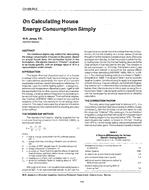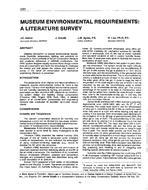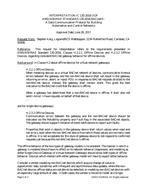The temperature distribution from an experimental study of electric water heaters was compared with the results calculated by a simulation program using the same operating conditions. The calculation method consists of solving the energy equation that is applied to the control volumes representing the discretisation of the water tank. This equation contains both diffusion and convection effects, the latter being deduced from an appropriate hypothesis of water movement. The analytical model produced very satisfactory results. The calculated energy consumption of each heating element agreed very closely with the recorded data. The temperature in the top of the tank and the general behaviour of the temperature distribution were also comparable with the measurements. However, the simulation program failed to reproduce the same temperature field as measured in the bottom of the tank. This was caused mainly by the inability of the model to take into account the mixing effect between inlet water and that remaining in the water heater. Nevertheless, this deviation was found to have negligible effects on the simulation of the operation and energy consumption for the type of water heater considered.
KEYWORDS: temperature, comparing, experiment, electric heaters, water heaters, temperature distribution, comparing, water tanks, calculating, energy consumption, heating elements, temperature, measuring, mixing
Citation: ASHRAE Transactions, vol.97, pt. 2, Indianapolis, IN 1991
Product Details
- Published:
- 1991
- File Size:
- 1 file , 720 KB
- Product Code(s):
- D-18025


